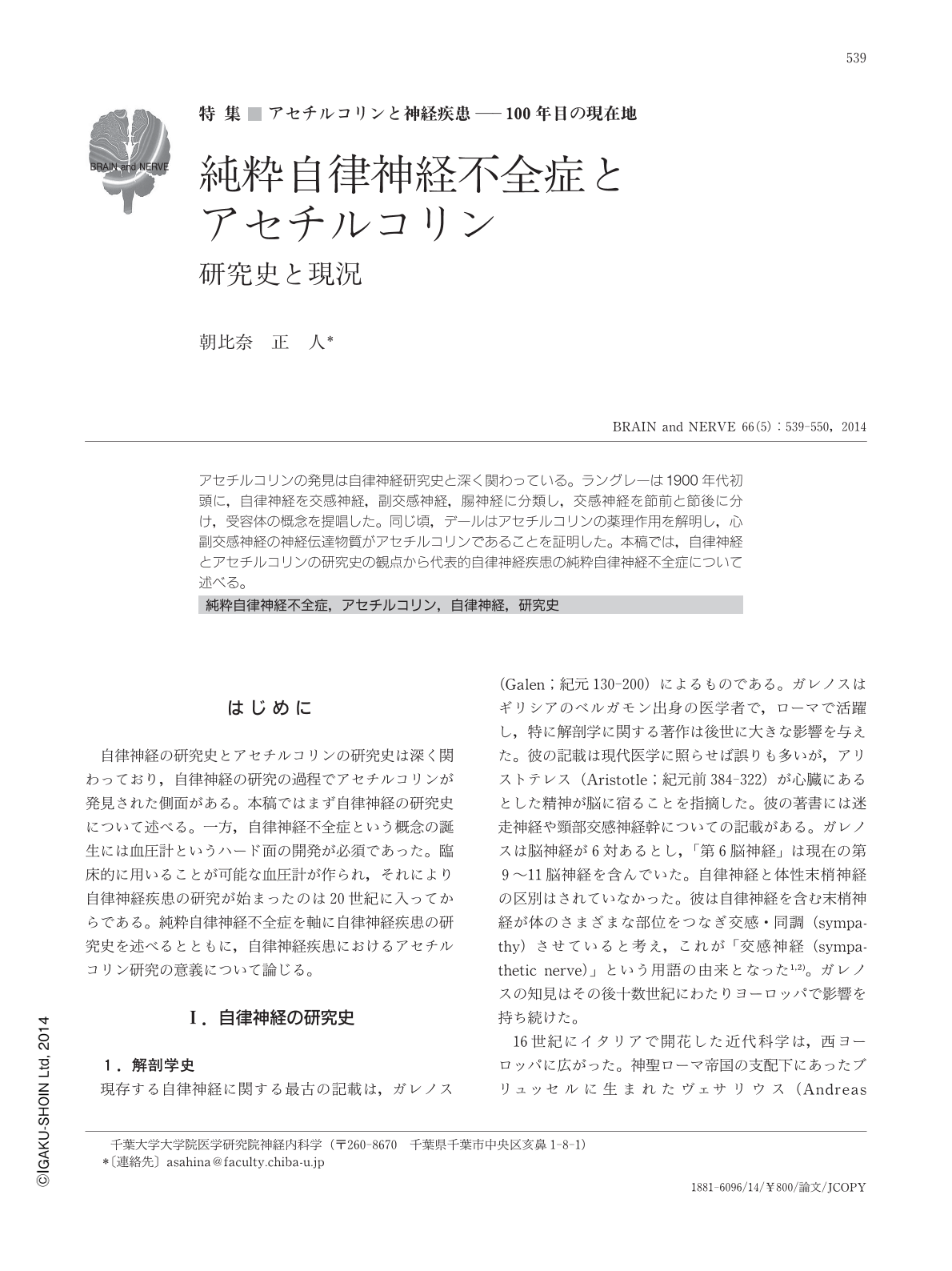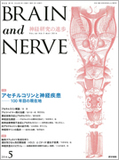Japanese
English
- 有料閲覧
- Abstract 文献概要
- 1ページ目 Look Inside
- 参考文献 Reference
アセチルコリンの発見は自律神経研究史と深く関わっている。ラングレーは1900年代初頭に,自律神経を交感神経,副交感神経,腸神経に分類し,交感神経を節前と節後に分け,受容体の概念を提唱した。同じ頃,デールはアセチルコリンの薬理作用を解明し,心副交感神経の神経伝達物質がアセチルコリンであることを証明した。本稿では,自律神経とアセチルコリンの研究史の観点から代表的自律神経疾患の純粋自律神経不全症について述べる。
Abstract
The discovery of acetylcholine was closely related to research on the autonomic nervous system. At the onset of the twentieth century, John Newport Langley (1852-1925), a patriarch of modern autonomic research, classified the autonomic nervous system into the sympathetic, parasympathetic, and enteral systems, proposed the concept of preganglionic and postganglionic autonomic nerves, and suggested the presence of a "receptive substance" allowing the interaction of postganglionic nerve terminals and effector visceral organs. Around the same time, Henry Hallett Dale (1875-1968) revealed the pharmacological properties of acetylcholine, and he and his colleague, Wilhelm Feldberg (1900-1993), demonstrated that acetylcholine acts as a mediator of nerve impulses across nerve junctions (synapses) between nerves (sympathetic ganglia), and between the vagus nerve and heart (parasympathetic nerve terminals). On the other hand, Bradbury and Eggleston first described 3 patients with orthostatic hypotension in 1925, introducing the term "idiopathic orthostatic hypotension". However, this term was used loosely. Therefore, Roger Bannister proposed "pure autonomic failure" as the term for idiopathic orthostatic hypotension without other neurological symptoms. Recently, autoimmune autonomic ganglionopathy associated with anti-ganglionic acetylcholine receptor antibodies has attracted attention as a differential diagnosis of pure autonomic failure, which is characterized by Lewy body pathology.

Copyright © 2014, Igaku-Shoin Ltd. All rights reserved.


